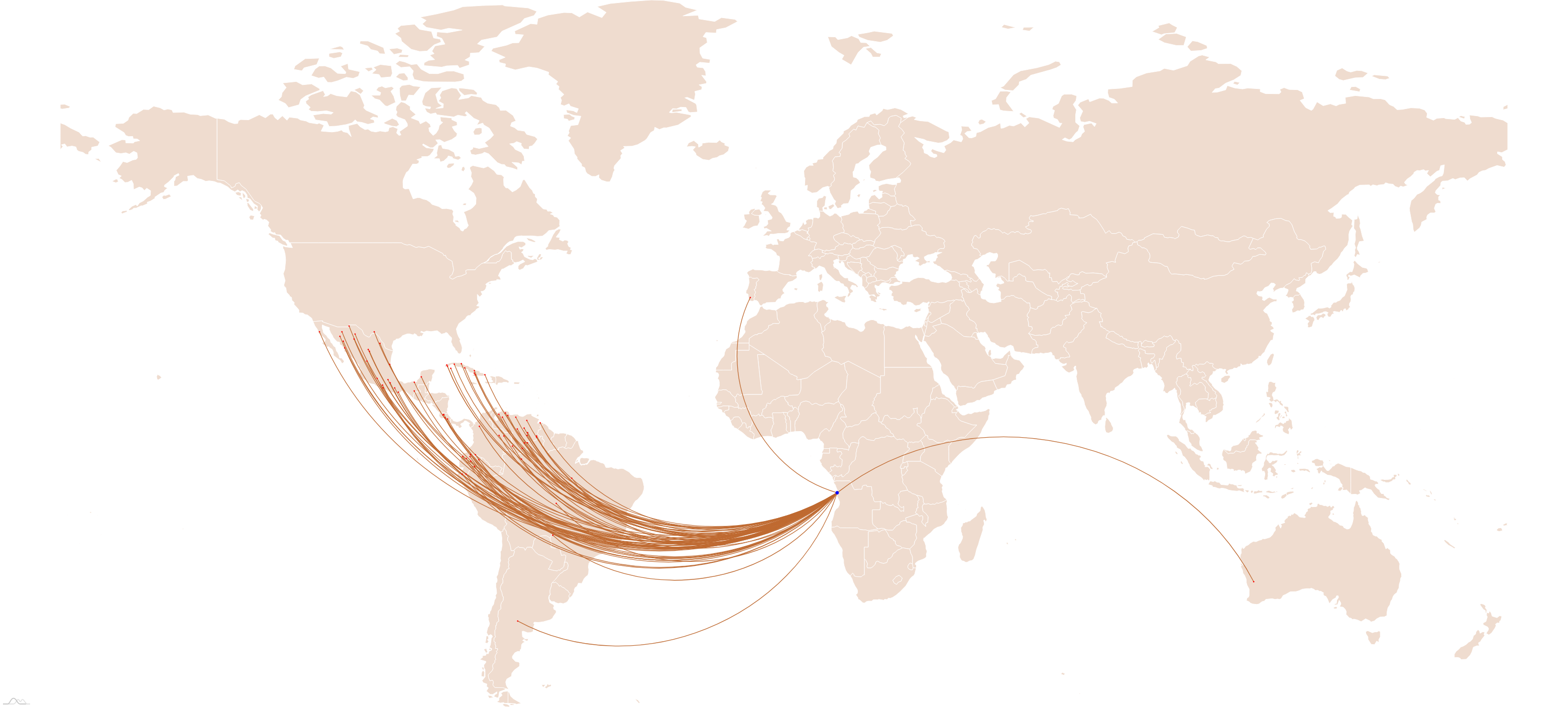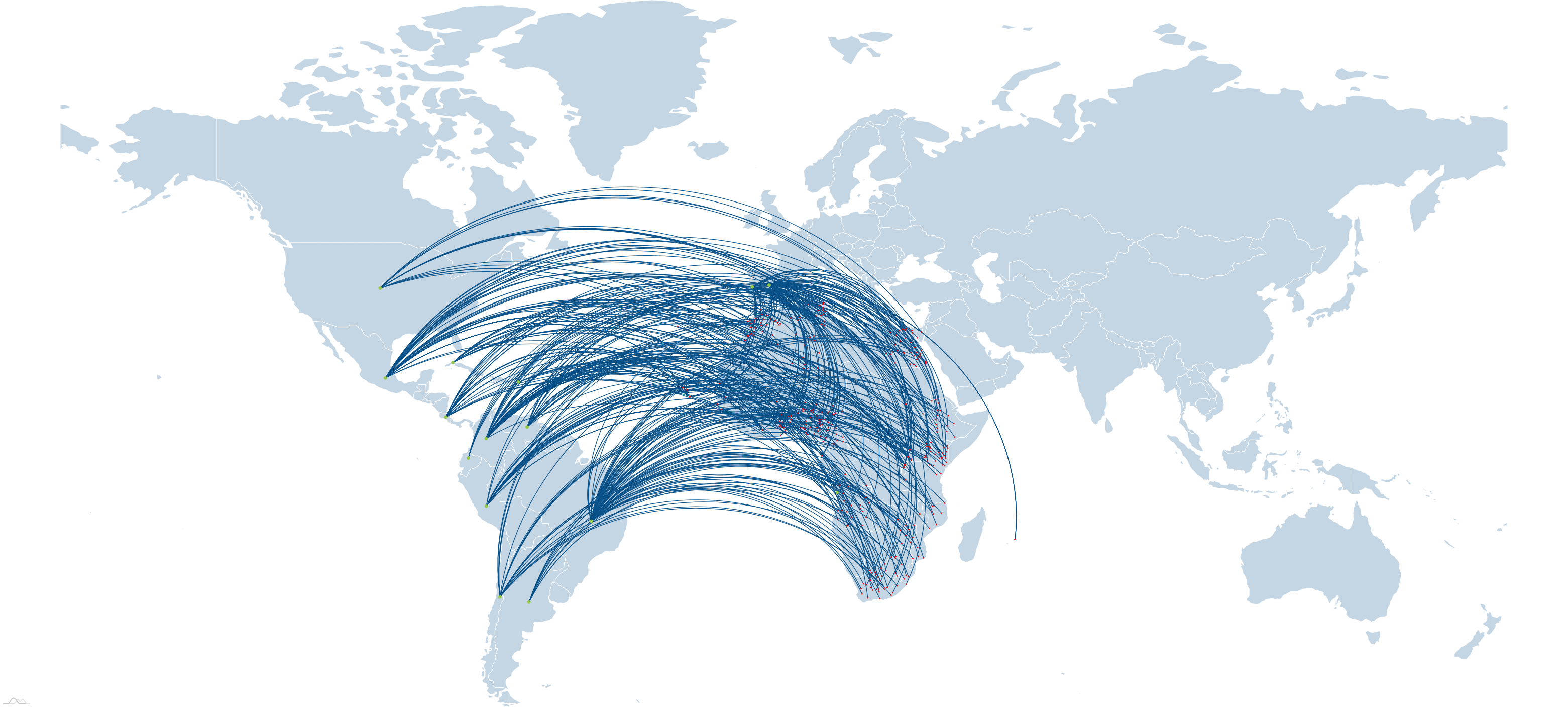Characterization indicators of the scientific and publishing activity of Angola in Open Access
Methodology for the evaluation of science in Diamond Open Access

Figure 1 Unfolded perspective of the Methodology for the evaluation of science in Diamond Open Access by approaches, indicators and application entities. Aguado-López, Becerril-García & Godínez-Larios, 2021.
The methodology for the evaluation of science in Open Access Diamante is a conceptual and methodological proposal for the characterization of scientific production published in scientific journals operating under a non-commercial Open Access scheme, that is, without charge for access to scientific content, nor for publication or processing (article processing charge -APC-). “The methodology for the evaluation of science in Open Access Diamante aims to identify the practices in which scientific knowledge is generated and communicated, offering the possibility of being applied to any information set with an appropriate metadata and information retrieval structure. (Aguado-Lopez, Becerril-Garcia, Macedo-Garcia, Godínez-Larios & González-Morales, 2022).
The methodology distinguishes two main points of academic activity:
- Research approach: The results of this study show the dynamics in which scientific knowledge is generated, for example, the scientific articles published by researchers attached to a university.
- Editorial approach: allows an approximation of the dynamics in which scientific knowledge is communicated, for example, the set of scientific production published in the journals edited by a country.
In both approaches, a set of indicators for the characterization of scientific activity is considered:
- Scientific publication
- Networks and dynamics of scientific collaboration (from co-authorship).
- Time for peer revision.
- Internationalization.
- Editorial effort.
- Use of scientific production.
This set of indicators has different fields of application, as they can refer to the activity carried out by different entities:
- Articles.
- Journals.
- Institutions.
- Countries.
- Areas of knowledge.
- Disciplines.
- Authors.
A central feature of the Methodology is the possibility of its application in any bibliometric information set that includes as features the interoperability and a standardization process. The Methodology for the evaluation of science in Open Access Diamante is based on the principle of offering mappings of the scientific and editorial performance of any agent who wishes to characterize his/her activity generating or communicating scientific knowledge. For example, the scientific production generated by a university or one that was published in a particular set of journals.
From this objective, the Methodology has the possibility of being applied in any information set that allows the metadata retrieval from appropriate standards of interoperability as well as a standardization that allows the identification of agents who are part of the scientific production.
One of the firsts experiences of application of the Methodology for the evaluation of science in Open Access Diamante has been carried out based on the scientific production integrated into the Scientific Information System Redalyc, a knowledge system that performs a standardization work from the following metadata:
- Institution that publishes the scientific journal.
- Country of the institution that publishes the journal.
- Area of knowledge of the journal.
- Discipline of the journal.
- Periodicity of the journal.
- Classification of the type of scientific document.
- Institution of author’s affiliation.
- Author's country of affiliation.
- Language of publication of the scientific document.
- Date of acceptance and reception of the scientific article.
The Methodology that is shown has the viability as a principle: from this conceptual and methodological perspective, one of the main challenges in the field of scientific evaluation is not the retrieval or the concentration of scientific production in the same set of information, but the possibility of analyzing it regardless of its location. Thus, regardless of the possibilities and limits that is offered by the indexing of scientific journals or the different ways of organization of scientific production, for example, in Institutional Repositories, the Methodology that is presented aims to be viable based on the appropriate interoperability and standardization: aggregator, journals, repositories, pre-prints, etc.
Some knowledge mappings made from the Methodology for the evaluation of science in Open Access Diamante and based on the scientific production integrated into the Scientific Information System Redalyc are shown.
|
External publication identified in African journals indexed by Redalyc |
|---|
 |
|
External publication in scientific output of african authors in journals indexed by Redalyc |
 |
|
Internal and external collaboration identified in African journals indexed by Redalyc |
 |
|
Internal and external collaboration in scientific output of african authors in journals indexed by Redalyc |
 |
|
Mapping of the country: Angola |
| https://www.redalyc.org/pais.oa?id=4&tipo=indicadores |
|
Mapping of the country: Chile |
| https://www.redalyc.org/pais.oa?id=26&tipo=indicadores |
|
Mapping of the institution: Universidade de Sao Paulo |
| https://www.redalyc.org/institucion.oa?id=22227&tipo=indicadores |
|
Mapping of the institution: Universidad Nacional Autónoma de México |
| https://www.redalyc.org/institucion.oa?id=15992&tipo=indicadores |
|
Mapping of the author: Eurico Wongo Gungula |
| https://www.redalyc.org/indicadoresAutor.oa?id=5558 |
|
Mapping of the author: Alejandro Macedo García |
| https://www.redalyc.org/indicadoresAutor.oa?id=756 |
The viability of applying the Methodology is based on the recognition of the features on which the scientific and editorial communities of countries such as Angola work.
For example, it is important to notice the Open Access Monitoring de Alemania, which gathers scientific production of Germany, generating indicators of charges, affiliation and distinguishing publication under an Open Access Diamante model.
The sources used are Dimensions, Web of Science, Unpaywall, Directory of Open Access Journals (DOAJ), OpenAPC, ROR - Research Organization Registry ROR and LAS:eR, and for the identification of scientific production the DOI is used as a condition, a practice that is rarely used in southern countries and, in this case, Angola.


Other indicators to characterize the scientific and publishing activity of Angola
| Ambit | Concept | Indicator | Referrer |
|---|---|---|---|
| Scientific | Scientific communication parting from Diamond circuits | Scientific articles in Systems of Diamond Scientific Information | Redalyc, AmeliCA |
| Scientific | Scientific communication parting from Diamond circuits | Scientific articles in Open Access Platforms | DOAJ, SciELO, AJOL |
| Scientific | Identification of the production and the scientific communities of Angola | Profile of ORCID researchers and Redalyc Authors | ORCID, Redalyc |
| Scientific | Identification of the Angolan scientific knowledge in their own technological infraestructures | Scientific articles by Angolan researchers in institutional repositories and in the Angolan National Repository | Institutional Repositories, Angolan National Repository |
| Scientific | Identification of the Angolan scientific knowledge in their own technological infraestructures | Books by Angolan researchers in institutional repositories and in the Angolan National Repository | Institutional Repositories, Angolan National Repository |
| Scientific | Identification of the Angolan scientific knowledge in their own technological infraestructures | Books by Angolan researchers in institutional repositories and in the Angolan National Repository | Institutional Repositories, Angolan National Repository |
| Scientific | Identification of the Angolan scientific knowledge in diverse technological infraestructures | Data sets generated by Angolan researchers in institutional repositories and in the Angolan National Repository | Figshare, other data repositories |
| Scientific-technological | Identification of the Angolan scientific knowledge in their own technological infraestructures | Patent applications and granted patents from Angolan researchers | Instituto Angolano da Propriedade Industrial (Angolan Institute of Industrial Property) |
| Publishing houses | Scientific journals with circulation on Diamond communication circuits | Scientific journals indexed in Diamond Scientific Information Systems | Redalyc, AmeliCA |
| Instrumentation on Open Access | Protection and institutional promotion of the open scientific communication | Mandates and institutional policies of Open Access in ROARMAP | ROARMAP |
Table 1 Other indicators to characterize the scientific and publishing activity of Angola
Recommendations
- The conceptual, methodological and operational proposal of the characterization indicators of Angola's scientific and publishing activity in Open Access constitutes only a first approximation to a referential framework of Angola's performance in the field of Open Access. This should be discussed among the relevant actors of the Angolan context to establish its relevance, pertinence, redesign and implementation.
- It is suggested to include in future horizons the indicators that the academic, student and civil communities of Angola consider pertinent for its framework to characterize Angola's scientific and publishing activity in Open Access.
- The discussion of the indicators framework must be accompanied by measurement and periodicity standards pertinent to the scientific, social and political context of Angola.


